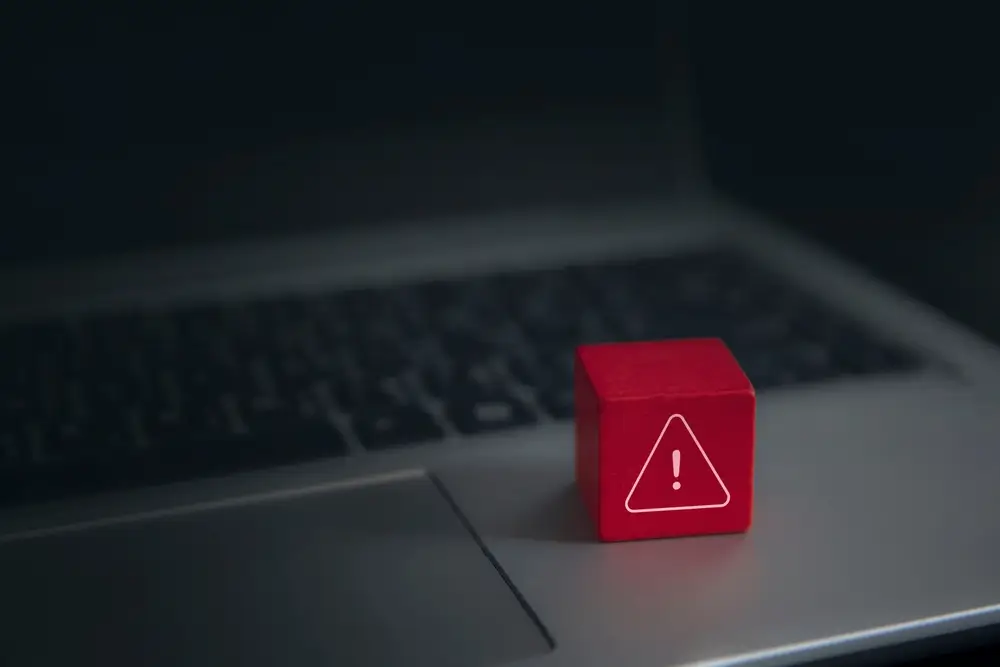Phishing Attacks: Detect And Mitigate With Expert Tips

Phishing attacks are currently the most widespread cyber threat and their frequency continues to increase.
Editorial July 17, 2024

Share on LinkedInShare on Twitter
Phishing attacks represent the most prevalent cyber threat today, and their frequency is only rising. While this may be concerning, there are effective measures to protect yourself. Understanding the signs of phishing is crucial in safeguarding against these attacks.
Knowing how to detect phishing attempts is essential to avoid falling victim. By recognizing suspicious activity and refraining from engaging, you can prevent potential attacks altogether. While security systems and software are beneficial, it’s also important to be vigilant and able to identify phishing attempts independently.
Even if you’re unable to detect every attack, being well-informed allows you to mitigate their impact effectively. Continue reading to learn how you can best prepare yourself against the growing threat of phishing attacks.
Anti-Phishing Software and Email Filtering Systems
Email filtering systems like spam are the first line of defense against phishing attacks. Usually present as a default in e-mail services, these systems detect incoming emails for known phishing indicators, such as suspicious sender addresses, malicious links, or attachments.
Machine learning algorithms and threat intelligence in anti-phishing software recognize patterns and compare them with a database of known threats.
They then deploy advanced email security solutions that block phishing emails before they reach the user’s inbox, therefore mitigating any chances of attacks succeeding.
Cybersecurity Training and Phishing Awareness
When it comes to our part in mitigating phishing attacks, educating users about how to detect them is crucial. Training regarding this may include how to recognize patterns of features present in phishing emails, as well as understanding the dangers of clicking on unknown links.
Phishing simulations could be one way to help users identify fake sender identities and other features present to mitigate potential phishing attempts. Part of this training may include a process for reporting suspicious emails which allows for them to be promptly investigated and removed. Building a culture of security awareness would reduce the chances of successful phishing attacks.
Ensuring Backup Strategies Are Present
Backups serve as a safeguard against data loss when phishing attacks occur and are necessary to mitigate fallout. Regularly scheduled backups mean that any compromised data can be replaced with an older and cleaner version. This also reduces the impact that attackers wish to have if they use data encryption or deletion as a form of attack.
Additionally, having a reliable backup system means ongoing phishing attacks can be detected. As the system compares recent backup data with current data, patterns of attacks can be identified. This detection mechanism can result in a swift investigation and response thus mitigating the extent of potential damage.
Multi-Factor Authentication (MFA)
Multi-factor authentication adds an extra layer of security on top of password protection by asking users to provide two or more verification types to gain access to anything. This may be codes email verifications, or even facial recognition. So, even if a phishing attack gains access to a user’s login information, the attacker would still need the second factor- which tends to be something only the user has access to, for example, a device.
This significantly reduces the risk of unauthorized access from phishing attacks. It’s important to remember which MFA methods are strongest and that things like SMS-based authentication should be avoided in favor of more secure methods of authentication apps.
Ensuring Secure Browsing Practices
Encouraging secure browsing habits can help users recognize phishing sites through things like checking the URL for HTTPS or other signs of a legitimate website and being wary of prompts asking for personal information. Other than this education, systems of browser extensions that warn users about suspicious websites are also helpful in aiding detection.
Updating browsers regularly and enabling built-in security features, helps mitigate these phishing risks. Web filtering solutions that block access to infamous or known phishing sites and thus provide around-the-clock protection against malicious links are crucial for mitigation as well.
Regular Security Audits and Updates
Conducting regular security audits helps in detecting vulnerabilities that could be used by phishing attackers. Regular security audits mean reviewing email security configurations, user access controls, etc. Most importantly ensuring that system and software updates are up to date with the latest security patches is crucial for mitigation.
Addressing and fixing any vulnerabilities identified during these security audits is essential in reducing the risk of phishing attacks. Regular audits could also include refining security policies and practices to fit evolving industry practices.
Enforcing IP Regulations
Enforcing IP restrictions works by controlling access to network resources based on IP addresses. This method ensures that only authorized IP addresses can access sensitive systems, reducing the risk of unauthorized access typically associated with phishing attacks. IP restrictions help in creating a secure perimeter around critical assets.
This is particularly effective in mitigating attacks where phishing aims to harvest login credentials to infiltrate the network. Any attempt to access the network from an unauthorized IP address can trigger alerts, indicating potential phishing activity. This allows for quick detection and response to suspicious activities, thus reducing the time attackers have to exploit any compromised credentials.
Unfortunately, phishing attacks are growing more and more common. However, with these steps, we are sure that everyone will feel more equipped to handle any possible malicious activity if ever encountered.
All of these steps, when combined, work great in dealing with ensuring no attacks can occur in the first place. Putting up lines of defense is essential in making sure your or your organization’s devices are the best prepared for any breaches.
Protecting your information and data is becoming harder and harder as attacks are becoming more common and more accessible to perform. However, ensuring you stay updated on the latest cybersecurity tips and security methods is a necessity in our current digital world.





